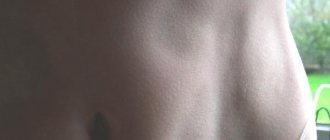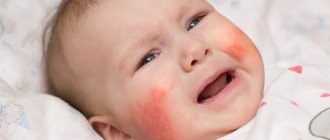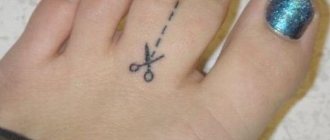What could be the cause of the disease?
- Genetic mutations that cause a structural change in epithelial cells, as a result of which they are transformed into epidermal cells.
- Symptoms can be caused by awakened hair follicles, and this is a real sign of malignant tumors. Often, this disease is precisely a warning about the possibility of oncological processes starting in the future. It has been statistically proven that in 90% of patients with hypertrichosis, tumors are detected after some time.
- Hypertrichosis can also be a side effect from the use of various medications. Such drugs include, for example, streptomycin, penicillin, corticosteroids, psoralen, etc.
- Also, hypertrichosis sometimes signals the presence of skin infectious diseases (for example, dermatomycosis), traumatic brain injuries, and epidermolysis bullosa.
- Anorexia nervosa and exhaustion
- Injuries, hypothermia, and scars cause the formation of local hypertrichosis.
- Regular careless facial depilation, as a result of which previously soft hairs become coarser and darken over time.
- Unhealthy bones (for example, spina bifida)
- Mental disorders (for example, epilepsy)
Causes
1) Genetic
2) Medical conditions
Acquired hypertrichosis is usually present in cancer. This condition is also associated with metabolic disorders such as anorexia, hormone imbalances such as hyperthyroidism, or a side effect of certain medications.
3) Medicines
Several drugs can cause generalized or localized acquired hypertrichosis, including:
- immunosuppressants: cyclosporine;
- vasodilators: diazoxide and minoxidil;
- antibiotics: streptomycin;
- diuretics: acetazolamide.
How does hypertrichosis manifest?
Some differences in symptoms can be found in women and men. In the former, hypertrichosis is characterized by increased hairiness in places where it should not be. This takes into account race and age characteristics. For example, excess hair growth on the legs of Mediterranean women is quite common, but this same manifestation in young Asian women already indicates possible hypertrichosis.
Male hypertrichosis, in the form of abundant hair growth on the back, face or legs, is essentially an atavism that manifests itself already in newborns.
The disease in children is often accompanied by an abundance of birthmarks. Fused eyebrows are also evidence of limited hypertrichosis.
Causes of hypertrichosis in a child
The clinical classification of hypertrichosis distinguishes two forms of the disease: congenital and acquired. The source of hair growth in both cases is a mutation of the epithelium - the structure of the tissue changes, which results in increased nutrition of the hair follicles in a separate area of the skin.
The key factor in the development of congenital hypertrichosis is hereditary disorders - atypical hair growth is passed on to the baby from the parents. Sometimes mutated genes appear after a generation and are passed on to children from grandparents.
Hormonal disruptions in the body of the expectant mother during gestation have a significant impact on the condition of the newborn. Thus, endocrine changes can provoke increased hairiness on the child’s abdomen and chest.
Risk factors after the birth of a baby are:
- oncological diseases;
- psychosomatic disorders;
- infections;
- mechanical damage to the skin;
- long-term exposure to medications.
Treatment of hypertrichosis at Es Clinic
The most reliable and best method is hair removal. Moreover, independent hair removal can only lead to progression of the disease. Children's hypertrichosis is eliminated by bleaching or special creams.
Since the main cause of hypertrichosis is a genetic mutation, studying the genome is undoubtedly important. Research and the search for reliable methods of correction will help develop additional treatment methods, which will have a positive impact on the health of future generations.
This information is provided for informational purposes only and should not be used for self-treatment.
Hypertrichosis
To accurately diagnose hypertrichosis, manifestations alone are not enough. It is necessary to exclude the hormonal nature of the disease and hirsutism. In addition to visiting a dermatologist, you will need to be examined by an endocrinologist and gynecologist. As a result, an individual treatment regimen for hypertrichosis is selected.
If hormonal disorders are not detected, then the treatment of hypertrichosis consists of hair removal. Self-correction of hypertrichosis in the facial area using tweezers and wax plates leads to increased symptoms. The only reliable method of treating hypertrichosis is electrical hair removal.
In particular, in children before the end of puberty, to correct hypertrichosis, hair bleaching is used with 3% hydrogen peroxide or excess hair is removed using special creams.
During the period of correction of hypertrichosis using electrical hair removal, it is necessary to abandon other methods of hair removal. A needle bent at a right angle is inserted deep into the follicle and an electric discharge is applied to the hair follicle. They also act on several nearby hairs. After removing the needle, the hairs are carefully removed with tweezers. They should come out on their own without any effort, otherwise the procedure must be repeated. An electrolysis session for hypertrichosis takes about half an hour. In one session, from several to several dozen hairs are removed, depending on the patient’s sensitivity to the procedure. For hypertrichosis of the chin, about 60 procedures are performed over the course of a year; epilation of the area above the upper lip will take from three to six months, after which the symptoms of hypertrichosis will disappear without a trace. Many people resort to this procedure for hirsutism, but this is ineffective, since the pathology occurs due to hormonal imbalances, and the hair grows back.
If epilation with hypertrichosis is painful, then local anesthesia is used. Swelling and slight erythema after the procedure disappear within a day. During the entire period of electrolysis it is necessary to use sunscreen to prevent spot hyperpigmentation. Electrolysis is used for hypertrichosis of the chest, abdomen and pubis, since ordinary shaving and hair removal with wax leads to more intense hair growth.
Since the main cause of hypertrichosis is gene mutation, research in the field of genome correction will help develop new methods for treating hypertrichosis in which subsequent generations will be spared the likelihood of its occurrence.
What treatment measures should be carried out
Any treatment can only take place as prescribed by a doctor. And it will depend directly on the diagnosis. Thus, timely detection and treatment of endocrine disorders most often leads to a positive result, since when the root cause is eliminated, the symptoms go away and hair begins to grow normally. The same applies to telogen effluvium.
In the same case, when we are talking about mechanical damage to the hair, it is enough to loosen the braiding or even abandon it altogether at least for a while and choose more comfortable soft elastic bands - and the problem will be solved by itself.
Ringworm requires a course of treatment with antifungal medications, which most often does not exceed eight weeks. During this period, you need to wash your hair with a special medicated shampoo.
Trichotillomania requires a comprehensive approach. This is the area of competence of psychologists and psychiatrists who conduct conversations with children, specialized training, and also conduct relaxation therapy sessions. There is no “clinic” here when it comes to hair loss in children. As soon as the child stops pulling out hair, hair growth returns to normal.
Complications of hypertrichosis
A timely visit to a doctor will allow you to determine the causes of hypertrichosis in children and select effective treatment. The course of the disease is rarely accompanied by complications. Exceptions include attempts by parents of children to independently remove excess hair.
Damage to mutated tissues under certain circumstances (ecology, diet, heredity) can lead to their degeneration and the appearance of malignant or benign formations on the skin.
We identify risk factors and combat them using adequate methods
A number of factors that can trigger hair loss in young children are similar to those in adults, and some will be specific to a particular age. Let's take a closer look at the main ones.
1) Diseases associated with disorders of the endocrine system , disorders of the liver, adrenal glands or kidneys can, among other symptoms, manifest themselves in hair loss. It should be remembered that while an adult is immediately able to pay attention to changes in health, children, especially young children, can often have difficulty explaining something even to a doctor. Therefore, even if you do not notice any changes in the child’s behavior other than hair loss in children, this is still a reason to consult a pediatrician. Medical and parental attention should be especially close if the child has undergone a course of hormonal treatment.
2) Telogen effluvium is a type of baldness that is especially common in young children. The name of this cause of hair loss in children is taken from the name of the stage of hair growth, namely the period when the hair stops growing for about three months, as if “falling asleep.” This is the final stage of the cycle for one hair. Next comes the repetition of an identical cycle, when new hair replaces the old one. We can talk about telogen effluvium if the hair does not “awaken” in a timely manner. Sometimes, if we are talking about a very young child, this process can improve on its own (but you still need to see a doctor), but more often the condition indicates an excess of vitamin A in the baby’s body.
3) Trauma to the hair shaft is the cause of hair loss in children, which may be due to the effects of exposure to chemicals on the scalp or due to too much mechanical pressure on the hair. This often happens to girls whose parents braid their hair too tightly or use elastic bands and hairpins that damage their hair.
4) Often, children's hair begins to thin and fall out due to a neurotic disorder called trichotillomania. This disease manifests itself in the child’s desire to constantly pull and pull his hair, and quite strongly. If the problem is not identified in a timely manner, it can have far-reaching consequences not only for the baby’s mental health, but also for hair growth itself. With systematic mechanical impact on hair, its growth can slow down and even stop altogether, especially if mini-scars appear as a result of pulling out.
5) Dermatological diseases , in particular ringworm, is another typical “childhood” cause of hair loss in children. The clinical picture in this case is characterized by the presence of first broken hair on the affected area, and then the formation of bald spots, in which inflammation, peeling and severe itching are observed. This disease is a fungal disease, so it should be treated by a dermatologist.
6) Puberty is one of the most difficult periods for a child’s body, when hormonal changes in the entire body take place on “adult lines.” And this can also cause hair loss in teenagers. Increased emotionality often leads to stress, which is known to negatively affect hair follicles.











